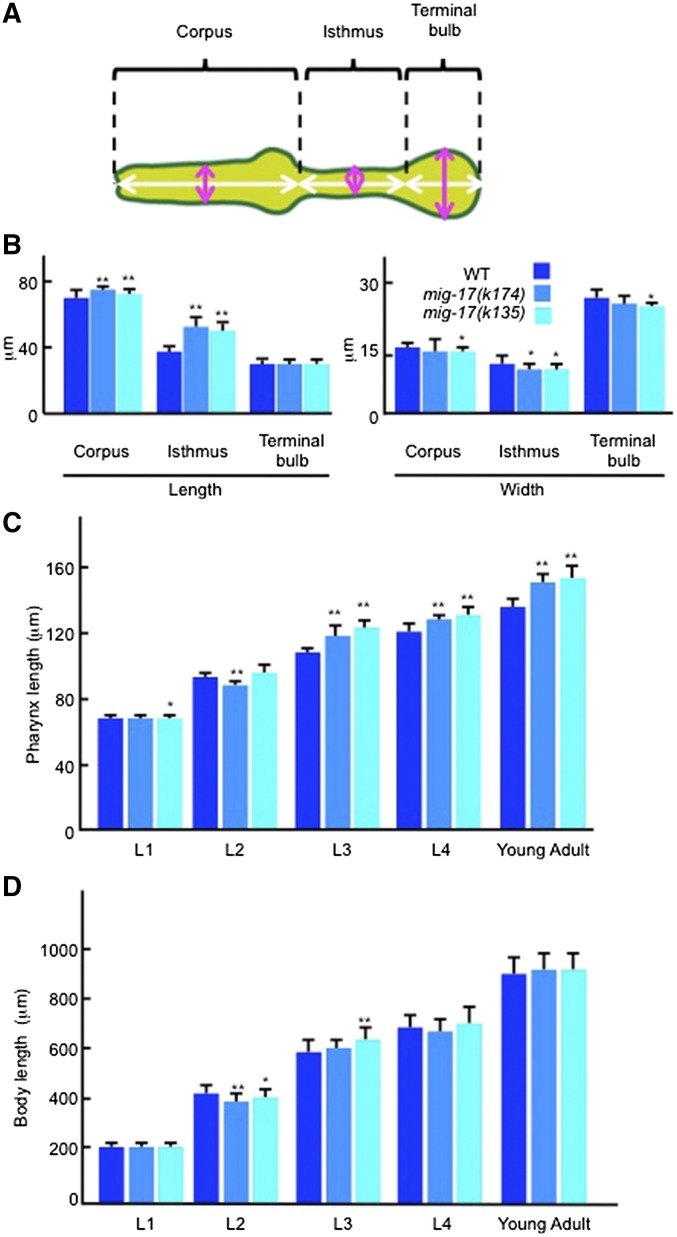Figure 3.
Pharyngeal defects in mig-17 mutants. (A) The regions of the pharynx are indicated. Corpus, isthmus, and terminal bulb correspond to the muscular regions from pm1 to pm4, pm5, and from pm6 to pm8, respectively. Regions measured to determine length and width in (B) are shown by white and magenta bidirectional arrows, respectively. (B) Length and width of each pharyngeal region in young adult hermaphrodites (n = 20). The width was measured at the center of the corpus, isthmus, and terminal bulb. (C, D) Pharyngeal development in wild-type and mig-17 mutant animals (n = 20). Pharynx length (C) and body length (D). Worms having ∼10 germline nuclei, having gonad arms that recently completed the first turn and having Christmas tree-shaped vulval primordia were used as L2, L3, and L4 stage animals, respectively. Data are shown as the mean ± SD. P-values for Fisher’s exact test against WT are indicated: ** P < 0.01, * P < 0.05.

